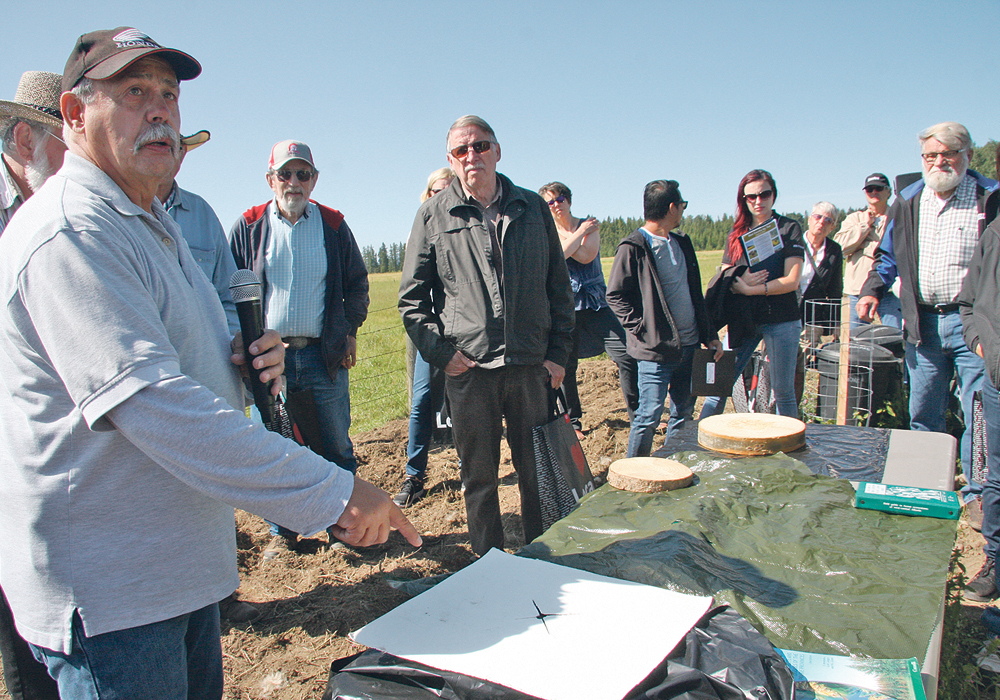The concept is designed to match a natural forest with a variety of trees and bushes to create protection and habitats
ROCKY MOUNTAIN HOUSE, Alta. — New tricks are being used to maintain the old idea of shelter belts.
Thousands of trees were planted across the Prairies during the 1930s to control erosion, collect snow and provide wind protection. Commonly, three rows of spruce, poplars and caraganas were planted but the trees were not always compatible.
The new concept of an eco-buffer is designed to match a natural forest with a variety of trees and bushes. It could include spruce, poplars, aspens, rose bushes, saskatoons or raspberries to create a wedge of protection, as well as habitat for animals and insects.
Read Also

Manitoba community projects get support from HyLife
HyLife Fun Days 2025 donated $35,000 each to recreation and housing projects in Killarney, Steinach and Neepawa earlier this fall.
Planting trees is expensive and requires a lot of labour. Proper care is needed at the start so the seedlings survive for decades.
“If you are going to go to all that effort you might as well have something that is going to be there for 60 or 70 years,” said Noel St Jean, executive director of the Agroforestry and Woodlot Extension Society.
It is a nonprofit society that puts on workshops and planting projects for shelter belts and riparian areas. The organization does not distribute trees but works with farmers and landowners about developing shelter belts that function for decades.
While many farmers practice no-tillage to seed crops, an eco-buffer needs well-cultivated soil so new trees are able to establish. Many sites have thick thatches of grass on the surface and the trees will die if the roots cannot reach soil.
“The most difficult time for any tree is the first three years. That is when you have the highest level of mortality,” St Jean said during an agriculture field day at Clearwater County in west-central Alberta.
Competition from crops, weeds and native grasses can wipe out trees.
Mulches like a plastic cover made of corn meal or wood or hemp fibre mats or other landscape material are laid around the seedlings to keep out unwanted plants for the first year.
Wood mulch is porous and may introduce weeds. Weeds and grass also grow through.
Metal cages are also available to encircle the seedling to keep out deer. They are good for the first year and after that the tree may outgrow it.
The society grew out of a desire of government, industry and conservation agencies to sustainably manage the 8.9 million acres of privately owned forest in Alberta. It began as a woodlot extension program and eventually transitioned into the society, recognizing the importance of integrating agriculture and forestry.
The society works with landowners on woodlot management, riparian restoration, shelter belts and eco-buffers, silvo-pasture and wildlife habitat enhancement.
Help is also available for project design and tree health assessment.
















